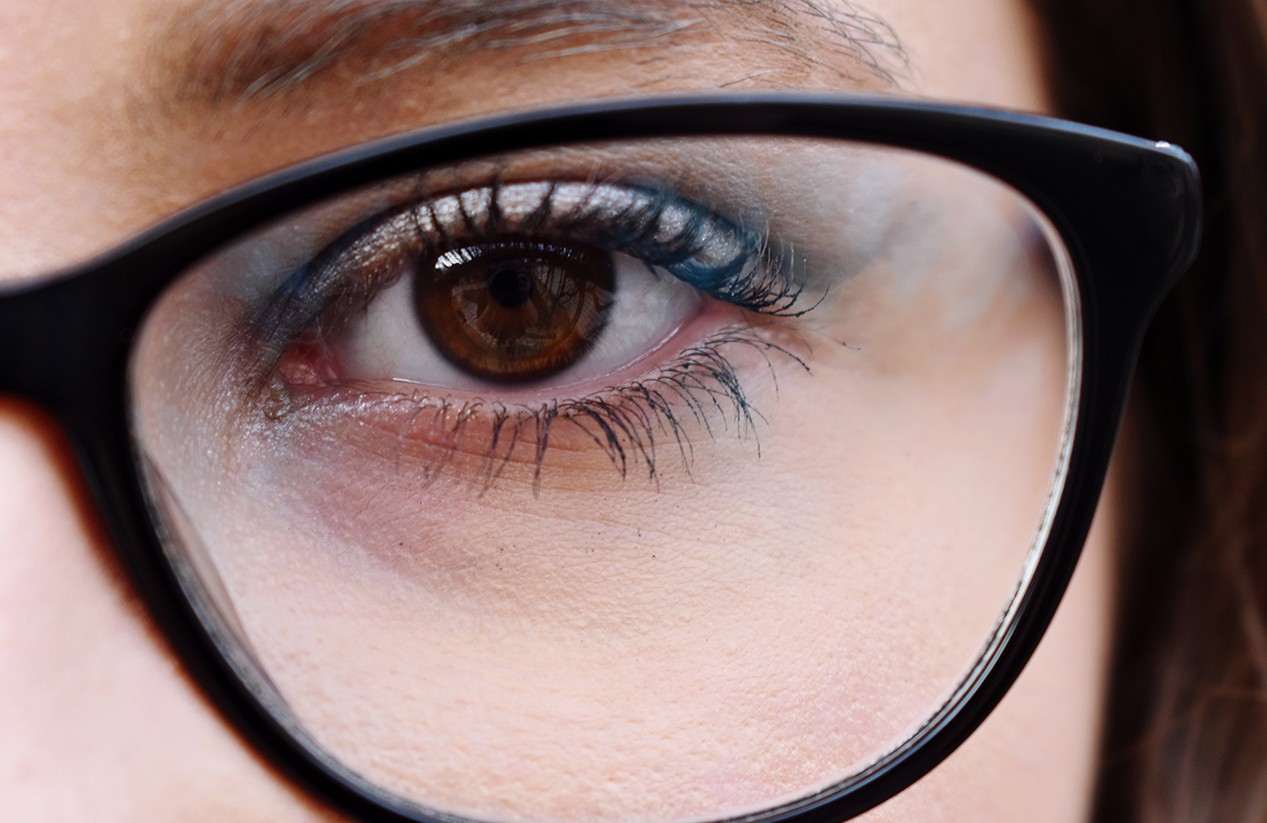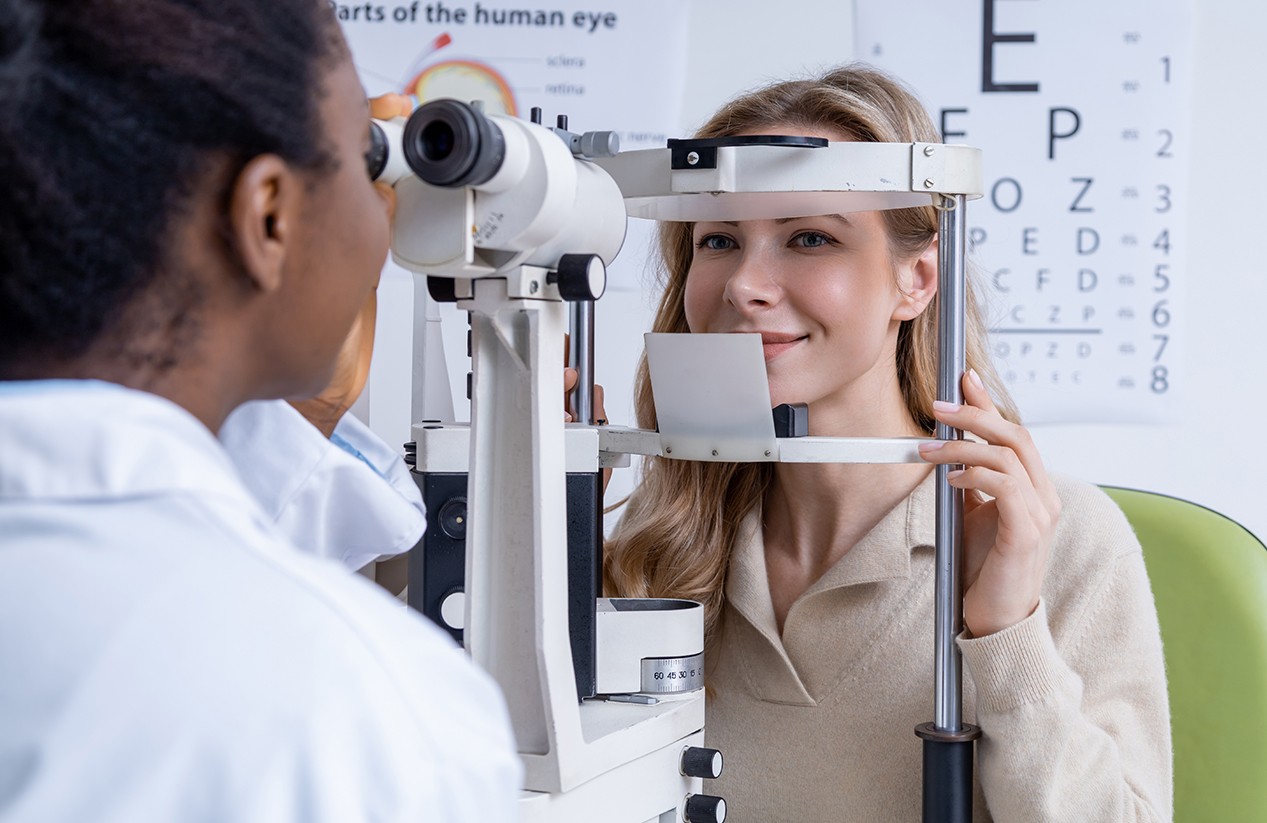- GlassesShop By FrameShop By StyleFeatured












Astigmatism is one of the most common vision problems worldwide. It happens when the cornea or lens has an irregular shape, preventing light from focusing evenly on the retina. This uneven curvature distorts images, making objects appear blurry or stretched. Many people with astigmatism also notice increased glare, halos, and trouble seeing clearly at night.
This guide explains what astigmatism is, what causes it, how it affects light perception (especially during nighttime driving), and the best ways to manage it.
Astigmatism is a refractive error—just like nearsightedness or farsightedness—that reduces vision clarity. Instead of being perfectly round, the cornea or lens has an irregular curve, causing light rays to scatter instead of focusing to a single point.
Common symptoms include:
Blurry or distorted vision
Difficulty distinguishing shapes, letters, or numbers
Headaches and eye strain
Increased difficulty seeing in low light or at night
Eye care professionals use comprehensive exams, including corneal curvature measurements and visual acuity tests, to diagnose astigmatism and determine the severity. These results help guide the right correction, whether through prescription eyeglasses, contact lenses, or other treatments.

While the exact reason the cornea or lens develops an irregular shape isn’t always clear, several factors contribute:
Premature birth: Infants born early have a higher chance of developing astigmatism.
Eye injuries or surgery: Trauma or scarring can lead to irregular curvature.
Keratoconus: A progressive condition in which the cornea thins and bulges into a cone shape, creating irregular astigmatism.
Genetics: Astigmatism often runs in families and can appear alongside other refractive errors like myopia.
One of the most frustrating aspects of astigmatism is how it alters the way light is perceived. Because light doesn’t focus evenly, vision appears distorted in certain directions.
People with astigmatism often notice that symptoms become more pronounced at night. In low-light conditions, pupils dilate to let in more light, but this also increases the scattering effect. This creates additional glare, halos, and streaks around lights—making night driving particularly challenging.
Those with astigmatism may experience several types of light distortions, especially in dark environments:
Halos: Rings that appear around headlights, street lamps, or screens
Starbursts: Radiating lines around lights, resembling a star shape
Glare: Excessive brightness that reduces visibility
These distortions make tasks like night driving or reading illuminated signs more difficult. Choosing the right glasses for astigmatism, especially those with anti-reflective coatings, can help reduce these effects.
Yes, astigmatism can contribute to light sensitivity. Because the eye struggles to focus light evenly, brightness feels more intense. However, it’s important to note that light sensitivity can also stem from other conditions, such as cataracts or keratoconus.
If you’re dealing with significant glare or discomfort, an eye doctor can determine whether astigmatism—or another condition—is the cause.

Fortunately, there are effective ways to correct astigmatism and reduce nighttime vision problems.
Treatment options include:
Prescription eyeglasses: Glasses for astigmatism feature cylindrical lenses that compensate for irregular corneal curvature. Adding anti-reflective coating helps reduce glare and halos, making night driving safer.
Contact lenses: Toric lenses are specifically designed to correct astigmatism.
Refractive surgery (LASIK/PRK): Some people opt for surgery, though it’s not always suitable for everyone.
For most people, a pair of high-quality prescription glasses—like those offered by EFE Glasses—is the simplest and most effective solution.
Since astigmatism often worsens vision at night, here are practical ways to stay safe:
Prepare your vehicle: Keep windshields, mirrors, and headlights clean to reduce extra glare. Anti-glare films on mirrors can also help.
Adjust driving habits: Take breaks on long drives, avoid staring directly at headlights, and rely on peripheral vision to stay oriented.
Use the right eyewear: Glasses with anti-reflective coatings significantly reduce glare from headlights and street lamps.
Small adjustments—combined with proper vision correction—can make night driving much easier.

If you have astigmatism, investing in the right eyewear is essential. EFE Glasses offers a wide range of affordable prescription eyeglasses online, including frames designed for astigmatism correction and lenses with anti-reflective coatings that improve clarity and reduce glare.
Whether you’re looking for classic eyeglasses or modern, fashion-forward frames, EFE Glasses provides options that balance style, comfort, and function. Ordering is simple—you can enter your prescription directly online and choose the features you need.
Astigmatism is a common condition that affects millions worldwide. While it often leads to blurry vision, glare, and astigmatism lights at night, it can be managed effectively with corrective eyewear.
Regular eye exams, safe driving habits, and the right pair of prescription glasses for astigmatism make daily life clearer and safer. For affordable and stylish eyewear solutions, explore EFE Glasses—where protecting your vision meets everyday style.

